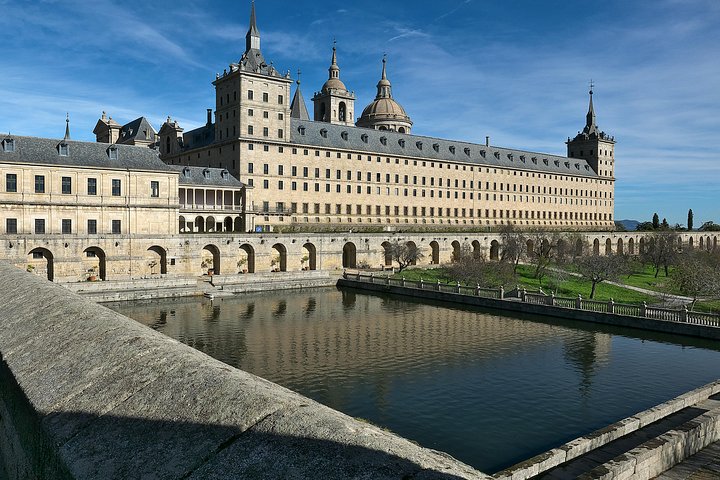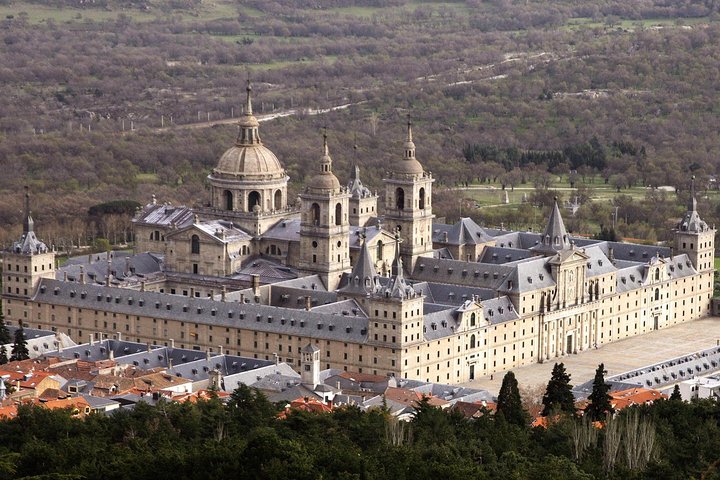Exploring Spain’s Historical Heart: El Escorial and the Valley of the Fallen
Drawn by the allure of Spain’s rich history, I embarked on a private tour to the Royal Monastery of San Lorenzo de El Escorial and the Valley of the Fallen. Join me as I explore these iconic sites, uncovering the stories etched in their ancient stones.
A Journey Through Time: The Royal Monastery of San Lorenzo de El Escorial
As a former professor of European history, I have always been drawn to the stories that ancient stones and grand edifices tell. The Royal Monastery of San Lorenzo de El Escorial, a sprawling complex nestled in the Spanish town of San Lorenzo de El Escorial, is one such place that has long intrigued me. Built between 1563 and 1584, this architectural marvel was commissioned by King Philip II of Spain and stands as a testament to the grandeur of the Spanish Empire.
Our journey began with a comfortable drive from Madrid, a city that never ceases to amaze me with its blend of modernity and history. The private vehicle was impeccable, and our guide, a veritable fountain of knowledge, regaled us with tales of the Spanish monarchy and the monastery’s significance. As we approached the site, the sheer scale of the complex became apparent. The monastery, a UNESCO World Heritage Site, includes a royal palace, a basilica, a pantheon, a library, a college, and a monastery, each with its own unique story.
Walking through the halls of the monastery, I was struck by the austere beauty of its architecture. The granite walls, the intricate frescoes, and the solemnity of the basilica all spoke of a time when religion and royalty were intertwined in the fabric of daily life. Our guide’s insights into the lives of the monks and the royal family who once inhabited these walls added depth to our exploration, making the past come alive in vivid detail.
The Somber Majesty of the Valley of the Fallen
After a thorough exploration of El Escorial, we made our way to the Valley of the Fallen, a site that evokes a complex tapestry of emotions. This monumental memorial, built to honor those who perished during the Spanish Civil War, is both a place of remembrance and a subject of controversy. The basilica, carved into the granite mountainside, is an awe-inspiring sight, its cross towering over the landscape as a symbol of reconciliation and reflection.
Our guide, with a sensitivity that matched the solemnity of the site, provided a nuanced narrative of the Valley’s history. The stories of the individuals commemorated here, both known and unknown, were shared with a respect that underscored the gravity of the place. As we walked through the basilica, the silence was palpable, broken only by the soft echoes of our footsteps.
The Valley of the Fallen is a place that challenges visitors to reflect on the complexities of history, the cost of conflict, and the enduring hope for peace. It is a reminder that history is not just a series of events, but a collection of human experiences that continue to shape our present and future.
Reflections on a Day Well Spent
As we returned to Madrid, I found myself reflecting on the day’s journey. The seamless organization of the tour, from the ease of booking to the attentive service provided by our guide, made the experience all the more enriching. The opportunity to delve into the rich tapestry of Spanish history, to walk in the footsteps of kings and monks, and to stand in silent contemplation at the Valley of the Fallen, was a privilege I will not soon forget.
For those who share my passion for history and architecture, a visit to the Royal Monastery of San Lorenzo de El Escorial and the Valley of the Fallen is an experience not to be missed. It is a journey that offers not only a glimpse into the past but also a deeper understanding of the forces that have shaped the world we live in today. I encourage you to embark on this journey, to explore, to learn, and to reflect on the stories that these remarkable sites have to tell.


































